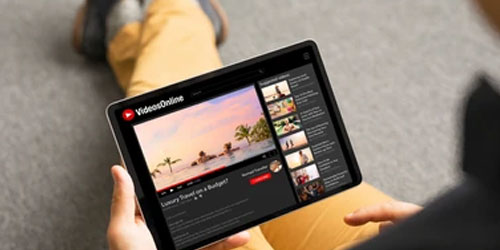If you are a CIO or VP IT in any professionally managed organization in any industry vertical and you haven’t introduced, championed and brought IOT (in some shape or form) in your organization – Probably you are already fired.
If not — you must have done your share of raising the IoT hype. Got a POC done. Alternatively, if you have got deeper pockets, you may have also done an MVP or a production pilot. Hurray. You did it!!
However, Now What?
What’s Next?
Business leaders in your organization who got excited after seeing the POC/MVP are now thinking…
- “How do I achieve business integration of this new-found connected ability into my organization’s mainstream business processes?”
- “How do I expand the MVP / Production Pilot from a limited sub-processes to the complex, global and enterprise-level processes?”
- “How do I train my staff and envision roles required in the Connected World?”
If they haven’t – – Soon, business leaders in every organization will bug you, The IT Organization, with all of the above and many more questions. You and your technical experts are / will have to think about following…
- “How should I integrate this great connected MVP with 500 of my enterprise business applications?” (You might be running your enterprise on diverse platforms ranging from Microsoft, IBM, SAP – all the way back to Yes – Cobol and green screens. However, for MVP. you may have chosen to integrate with least complex application)
- “How should I set up set up an ETL process for effectively integrating enterprise data with IoT / Connected devices data”? (You must have used only a subset of data for your POC / MVP)
- “How do I create an effective plan for transitioning to an ever-evolving future state that’s Integrated with & leverage my existing IT landscape?” (You may have been running multiple application and vendor rationalization initiatives and all of that need to coherently exist with your connected journey).
If you are thinking about all the above questions – You are not alone. And most importantly, you are not behind.
Most of the companies exploring connected solutions are reaching much faster to the First Value. MVP/POC – Or even production pilot success rate has gone up. Because organizations now trust the technology and the basic plumbing required to gain connected data is established well. Although there is still fight among various consortium, a feasible, scalable, and transparent architecture is standardized well.
However, what’s concerning is that most companies are getting stuck with these MVPs and POCs and are not able to scale up or adopt connected solutions fast enough across the organization. If they keep lingering there for a long time – there are chances that the Adoption and Expansion of connected solutions will become increasingly difficult.
Enterprise IT Organizations would need to take the lead, put in much effort to establish connected use cases in their organization’s mainstream business processes which are still operating in the constraints of enterprise systems.
Today – At a macro level, there are primarily 2 architectures. First – An Enterprise System’s Architecture – that’s evolved over the past few years based on business needs of organizations. Also, needless to say – is unique to each organization. Second – A New Age IOT/IIOT or Connected architecture that’s driving many of the new connected use cases. The technology that’s being touted to grow at a whopping 45% YOY.
Challenge is – these two architectures live in silo today. However, as we start to expand IOT solution footprint beyond POCs / MVPs, connected solutions architecture will need to gel well with the Enterprise Architecture.
The key to success is thorough transition planning to ever-evolving future state architecture!! I call it “COBOL2Connected”. In my 20+ Years of IT career, I have seen (and managed) multiple transitions from legacy systems / manual business processes to state of the art / modern business tools. However, a transition to Connected Solutions powered by IoT/IIOT, Cloud Computing, AI, ML, and Blockchain would be the most exciting and challenging. Add to it, other factors such as SaaS models, Additive Manufacturing and RPA, and what you have is a perfect storm!
My 2 cents (or maybe 4..) on how organizations can get prepared to face these challenges:
- Business Processes & Technology/Tools Mapping:Create and maintain a clear mapping of business processes to applications/technology/tools mapping. An end to end organizational process and associated technologies are a must-have for the transition to the future state. I have seen only a handful of organizations confidently pointing to a specific tool/technology for a specific business process. For most, it’s a humongous blob with a mishmash of ERP and legacy systems that handle everything from OrderToPay to ProcureToPay.
- Application Rationalization & IT Modernization:Invest in application rationalization and IT modernization initiatives irrespective of business-led transformation initiatives. Mere ‘Agile transformation’ is not modernization. Invest in a clearly defined role of each application/ tool and how they should evolve over the next few years. COBOL and other legacy applications are not going to vanish automatically. (We all know COBOL still handles the most business transactions almost 20 years after Y2K). They will need to be surgically obsoleted or adopted to co-exist with modern applications. Enterprise Architecture teams in organizations should pay attention to transition challenges besides experimenting with newer technologies.
- Enterprise Data Identification & SpecificationHave a meticulously updated enterprise Data dictionary. Data will be one of the biggest roadblocks in achieving the true value of connected solutions. Read my white paper “Data – The biggest roadblock to Connected Aftermarket” for one of such examples. There is a myth among many businesses as well as IT leaders that Big Data, ML, and AI will solve all their data problems. But to use these tools, enterprise data needs to be cleaned and formatted well. Understand, the connected data is useless if not married well with the enterprise data.
- PeopleTrain IT resources on the organization’s business process. Alternatively, cross-pollinate business resources in IT. In my view, this is the 2nd biggest gap (after data) in achieving true value out of connected solutions. The ‘Connected’ future state is only possible with IT-led business transformation, and people with a combination of both skills will be highly effective in achieving true digital transformation.
The blog is also available on following links.
https://medium.com/@shishir.choudhary/cobol-to-connected-its-all-about-transition-7174072c0368
https://www.linkedin.com/pulse/cobol-connected-its-all-transition-shishir-choudhary-cscp-pmp/

















